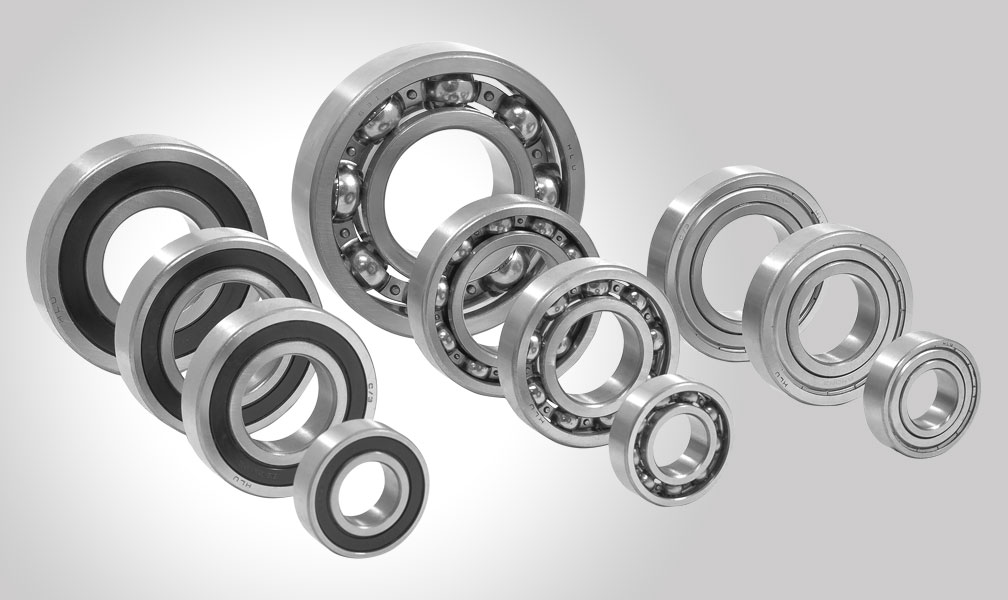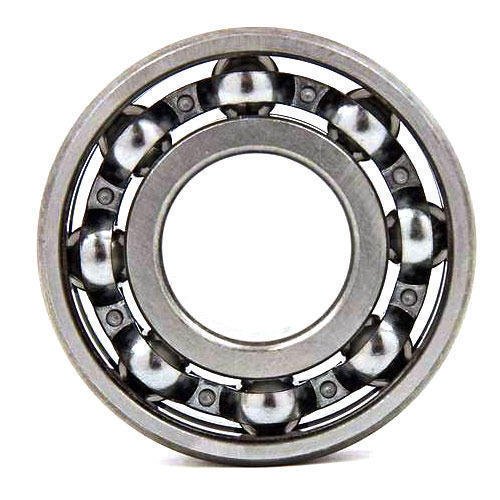What are the key advantages of using radial bearings in various industrial applications?
Radial bearings offer several key advantages that make them highly advantageous for various industrial applications. These advantages contribute to improved performance, reliability, and efficiency in machinery and equipment. Here are the key advantages of using radial bearings:
1. Load Support:
Radial bearings provide excellent load support, distributing and carrying radial loads in machinery and equipment. They are designed to handle the weight of rotating components, belts, pulleys, and other radial forces. By effectively supporting the loads, radial bearings minimize stress on the rotating components, ensuring smooth operation and preventing premature wear or damage.
2. Friction Reduction:
Radial bearings are designed to minimize friction between the rolling elements and raceways, resulting in reduced energy loss and improved efficiency. The rolling action of the elements reduces sliding friction, allowing machinery to operate with less resistance and lower power consumption. By reducing friction, radial bearings help optimize the performance of industrial applications, leading to increased productivity and energy savings.
3. Smooth Operation:
With their ability to facilitate smooth rotation, radial bearings contribute to smooth and precise operation in industrial applications. The rolling elements, such as balls or rollers, enable low-friction motion, ensuring that rotating shafts or assemblies move with minimal vibrations or jerks. This smooth operation enhances the overall performance, accuracy, and reliability of machinery and equipment.
4. Noise and Vibration Reduction:
Radial bearings play a crucial role in reducing noise and vibration in industrial applications. The rolling elements and bearing structure absorb and dampen vibrations generated during operation, minimizing their transmission to other components. By reducing noise and vibration, radial bearings contribute to a quieter and more comfortable working environment, as well as extending the lifespan of the equipment by reducing the risk of damage caused by excessive vibrations.
5. Versatility and Adaptability:
Radial bearings are highly versatile and adaptable to a wide range of industrial applications. They are available in various sizes, designs, and materials, allowing engineers to select the most suitable bearing for specific operating conditions and requirements. Radial bearings can withstand different speeds, temperature ranges, and environmental conditions, making them well-suited for diverse industrial applications across various industries.
6. Compact Design:
Radial bearings enable compact and space-efficient designs in industrial machinery and equipment. Their ability to support loads and facilitate smooth rotation allows engineers to design systems with smaller dimensions, reduced weight, and tighter tolerances. This compact design feature is particularly crucial in applications where space constraints or weight considerations are significant factors.
7. Longevity and Reliability:
Radial bearings are engineered to provide long service life and reliable performance in demanding industrial environments. They are designed with high-quality materials and advanced manufacturing techniques to withstand heavy loads, high speeds, and harsh operating conditions. Radial bearings undergo rigorous testing and quality control measures to ensure their durability and reliability, minimizing downtime and maintenance costs in industrial applications.
8. Cost-Effectiveness:
Radial bearings offer cost-effectiveness in industrial applications. Their ability to reduce friction, minimize power loss, and provide reliable performance contributes to improved energy efficiency and reduced operating costs. Additionally, the long service life and low maintenance requirements of radial bearings contribute to overall cost savings over the lifespan of the machinery or equipment.
In summary, the key advantages of using radial bearings in various industrial applications include load support, friction reduction, smooth operation, noise and vibration reduction, versatility, compact design, longevity and reliability, and cost-effectiveness. These advantages make radial bearings an essential component for enhancing performance, efficiency, and reliability in industrial machinery and equipment.
Are there specific types of radial bearings, and what are their unique characteristics?
Yes, there are several specific types of radial bearings, each with its unique characteristics and applications. These types of bearings are designed to accommodate different loads, operating conditions, and specific requirements. Here are some commonly used types of radial bearings along with their unique characteristics:
1. Deep Groove Ball Bearings:
Deep groove ball bearings are the most common type of radial bearings. They have deep raceway grooves that enable them to carry both radial and axial loads. Deep groove ball bearings are known for their versatility, high-speed capability, and relatively low cost. They are suitable for a wide range of applications, including electric motors, appliances, automotive components, and machinery.
2. Angular Contact Ball Bearings:
Angular contact ball bearings are designed to handle both radial and axial loads but primarily excel in supporting combined axial loads and moment loads. They have contact angles that allow them to carry higher thrust loads compared to deep groove ball bearings. Angular contact ball bearings are commonly used in applications such as machine tool spindles, automotive wheels, and pumps where precise axial and radial load support is required.
3. Cylindrical Roller Bearings:
Cylindrical roller bearings have high radial load-carrying capacity and are suitable for applications with heavy radial loads. They have cylindrical rollers as rolling elements and can accommodate axial displacement within the bearing. Cylindrical roller bearings are commonly used in industries such as construction equipment, gearboxes, and large motors.
4. Tapered Roller Bearings:
Tapered roller bearings are designed to handle both radial and axial loads. They have tapered raceways and rollers arranged in a way that allows the bearing to support higher axial loads in one direction. Tapered roller bearings are commonly used in automotive applications, including wheel bearings, transmissions, and differentials, as well as in industrial machinery such as mining equipment and machine tools.
5. Spherical Roller Bearings:
Spherical roller bearings can accommodate high radial loads and moderate axial loads. They have barrel-shaped rolling elements and self-aligning capabilities, allowing them to compensate for misalignment and shaft deflection. Spherical roller bearings are commonly used in heavy-duty applications such as mining, paper mills, and steel mills, where there are significant misalignment or heavy load conditions.
6. Needle Roller Bearings:
Needle roller bearings have cylindrical rollers that are much smaller in diameter compared to other radial bearings. They have a high length-to-diameter ratio, enabling them to handle high radial loads in a compact design. Needle roller bearings are commonly used in applications such as automotive transmissions, motorcycles, and industrial machinery.
7. Thrust Bearings:
Thrust bearings are designed to handle axial loads primarily and are often used in conjunction with radial bearings to support combined axial and radial loads. They come in various designs, including ball thrust bearings, cylindrical thrust bearings, and tapered roller thrust bearings. Thrust bearings are commonly used in automotive, aerospace, and industrial applications that require support for heavy axial loads.
8. Self-Aligning Ball Bearings:
Self-aligning ball bearings have two rows of balls and a spherical outer ring raceway, allowing them to accommodate misalignment between the shaft and housing. They can handle both radial and axial loads and are commonly used in applications where shaft misalignment is expected, such as conveyor systems, textile machinery, and agricultural equipment.
These are just a few examples of specific types of radial bearings, and there are many other variations and specialized designs available for specific applications. Each type of bearing has unique characteristics that make it suitable for particular operating conditions, load requirements, and performance expectations.
Can you provide guidance on the selection and sizing of radial bearings for specific applications?
Yes, guidance can be provided on the selection and sizing of radial bearings for specific applications. Choosing the right radial bearings involves considering various factors such as load requirements, speed, operating conditions, space limitations, and environmental factors. Here’s a detailed explanation of the steps involved in selecting and sizing radial bearings for specific applications:
1. Determine the Application Requirements:
The first step is to understand the specific requirements of the application. This includes identifying the load type (radial, axial, or a combination), magnitude, and direction. Determine the desired rotational speed, as well as any special operating conditions such as temperature extremes, exposure to contaminants, or presence of moisture. Consider any space limitations or design constraints that may impact the bearing selection.
2. Calculate the Load:
Calculate the applied loads on the bearing to determine the required load capacity. Consider both static and dynamic loads. Static loads are the forces acting on the bearing when the equipment is at rest, while dynamic loads are the forces generated during operation. It’s important to accurately calculate these loads based on the application’s operating conditions and the forces exerted on the bearing.
3. Determine the Bearing Type:
Based on the application requirements and load calculations, select the appropriate bearing type. Radial bearings include deep groove ball bearings, cylindrical roller bearings, spherical roller bearings, tapered roller bearings, and needle roller bearings, among others. Each bearing type has specific design characteristics that make them suitable for different types of loads and operating conditions.
4. Consider Bearing Size and Design:
Once the bearing type is determined, consider the size and design parameters. These include the bore diameter, outer diameter, and width of the bearing. The bearing size should be selected to handle the calculated loads and ensure proper fit within the equipment. Consider factors such as available space, shaft diameter, and housing design to determine the appropriate bearing size.
5. Choose the Bearing Material:
Select the bearing material based on factors such as load requirements, operating conditions, and environmental considerations. Common bearing materials include steel, stainless steel, ceramic, and various alloys. Consider properties such as strength, corrosion resistance, temperature resistance, and lubrication compatibility when choosing the bearing material.
6. Determine Lubrication Requirements:
Consider the lubrication requirements of the bearing. Determine the lubrication type (grease or oil) based on the application’s speed, temperature, and operating conditions. Calculate the required lubrication quantity and frequency to ensure proper lubrication and minimize friction and wear. Consider factors such as re-lubrication intervals and the availability of automated lubrication systems if applicable.
7. Evaluate Sealing and Protection:
Assess the need for sealing and protection features based on the application’s operating environment. Seals or shields can help prevent contamination ingress, retain lubrication, and protect the bearing from moisture, dust, or other contaminants. Choose the appropriate sealing solution based on factors such as the level of protection required, operating speed, and temperature conditions.
8. Consult Bearing Manufacturer or Expert:
If you are uncertain about the selection and sizing process, it is advisable to consult with the bearing manufacturer or seek guidance from a bearing expert. They can provide valuable insights and recommendations based on their expertise and experience. Provide them with detailed information about the application requirements, load conditions, and operating parameters to receive accurate guidance.
9. Consider Cost and Availability:
Finally, consider the cost and availability of the selected radial bearings. Evaluate factors such as the initial cost, expected service life, maintenance requirements, and the availability of replacement bearings when making the final selection. Balancing performance requirements with cost considerations is important to ensure a cost-effective and reliable bearing solution.
By following these steps and considering the specific requirements of the application, you can make informed decisions regarding the selection and sizing of radial bearings. It is important to continually monitor the performance of the bearings during operation and make adjustments if necessary to ensure optimal performance and reliability.
editor by CX 2024-05-08




